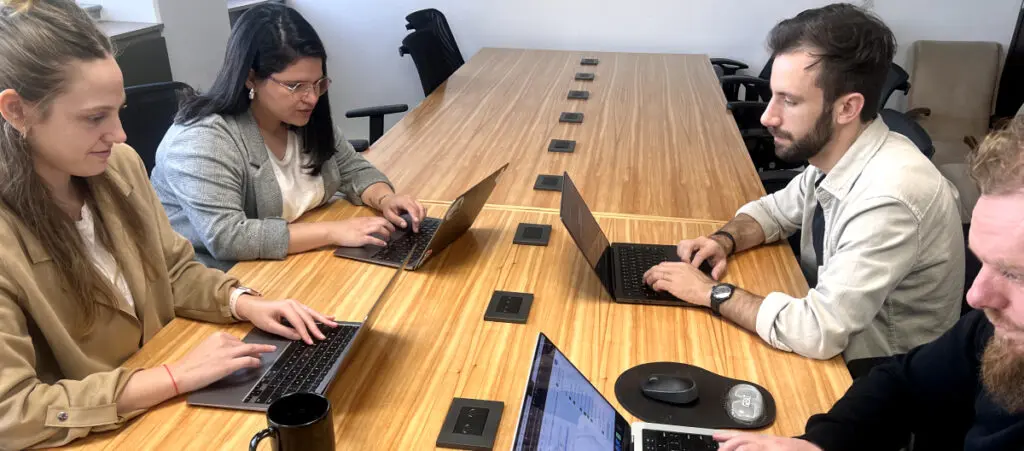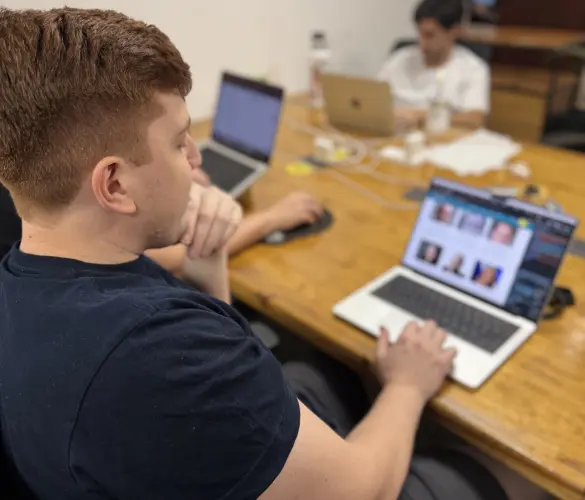Effective communication is a fundamental pillar in the client-digital agency relationship, especially during critical moments such as a transition or change in project management. At White Canvas, we have learned that maintaining open, transparent and frequent communication can make the difference between a project’s success or failure.
One of the clearest examples of this was our experience with Leerink Partners, an investment bank in the healthcare sector. We originally partnered with Leerink to develop their WordPress website, but only through an intermediary. After development was completed, we ran monthly maintenance for the site.
This new contract required us to go from communicating through an intermediary to establishing a direct relationship with the client.
The change presented us with several challenges, but by applying appropriate communication strategies, we strengthened our relationship and ensured client satisfaction. Let’s explore how we managed these adjustments, as hopefully, they can help other digital agencies and WordPress developers face these challenges more effectively.
The Challenges of Communicating Directly With the Client
The transition from working with an intermediary to having direct contact with Leerink Partners came with several challenges.
For context, Leerink Partners had worked with a growth marketing agency for years. This agency contacted us to partner in developing Leerink’s site so they could later focus on redesigning it.
This growth marketing agency had worked with Leerink for years, and their knowledge of the client’s preferences and way of working was invaluable. For us, the challenge was to gain that knowledge and adapt our approach to the client’s needs without disrupting the flow of the project.
To make it happen, we adjusted our communication strategy according to Leerink’s preferences.
One of the biggest adjustments was how we approached tickets. Usually, our approach to tickets is one of the following:
- “Normal” or “regular” tickets. These are relatively straightforward: the client makes a request, we estimate the necessary hours to make it possible, and send the quote to the client for approval.
- “Special” tickets. These tickets involve complex requirements where the number of hours is not as straightforward to estimate, so we first request approval for research. Based on the result of our research, we request approval for the necessary hours to fulfill the request.
During Leerink’s project, we used both approaches, depending on the request. Some requests were straightforward, while others required research before estimating the number of hours.
Additionally, we adjusted the frequency of meetings and adopted the communication platform the Leerink team was used to (Microsoft Teams).
Finally, this transition also required some internal adjustments, so we organized alignment meetings with our team members to ensure everyone was aware of our approach to tickets, modified meeting frequency, and platforms to use.
How We Applied Effective Communication Strategies During the Project
To maintain fluid and transparent communication with Leerink, we relied primarily on emails and Microsoft Teams meetings.
These tools were part of their regular processes, but our team was as used to Microsoft Teams. Still, we adopted it to ensure the smoothest possible transition for the client.
Through these meetings, we kept Leerink involved and informed at all times.
We scheduled meetings as the needs arose. After finishing the site’s development, our main role was to provide monthly maintenance, so we carried over the protocols we had been using during development into this new maintenance phase.
In these meetings, we would discuss situations and problems that required immediate attention.
The Impact of Improved Communication on Relationship and Project Results
During the maintenance phase, further adjustments were necessary. We sent Leerink the documentation required to establish a commercial relationship. In these documents, we specified:
- How to send tickets.
- What our everyday workflow and schedules look like.
- How long we usually take to acknowledge and start working on tickets.
- How to contact us during emergencies.
Essentially, it clearly explained all aspects of our maintenance contract with them. This allowed our communication to be very transparent since all parties were completely aware of what to expect of each other without an intermediary.
Overall, this transition from an intermediary to direct communication with Leerink resulted in more efficient communication and a closer relationship. By eliminating the back-and-forth communication with an intermediary, we significantly reduced delays and complications, allowing us to resolve any issue or complication faster.
Additionally, the direct approach helped us build greater trust with the Leerink leadership, which in turn improved efficiency when managing their requests and needs.
While we are still measuring the long-term impact of this transition, the immediate feedback we have received has been positive.
Leerink noticed and highlighted our efforts to establish clear and transparent communication, which increased their confidence in our ability to manage the project autonomously and efficiently.
Lessons Learned and Recommendations
The most important lesson we learned from this transition is to understand each client’s preferences and adapt our protocols accordingly. The tools and frequency of communication must be tailored to the specifics of each relationship.
For example, the maintenance contract we implemented proved to be key to the clarity and fluidity of the process. We believe this approach can be replicated in future projects, but always keeping in mind that we must adapt to our clients’ needs.
We recommend that other agencies facing a similar situation prioritize flexibility in their communication processes and listen carefully to their clients.
Clarity is fundamental. Documenting protocols and having direct and proactive communication are key elements to a successful transition.
In addition, we recommend organizing meetings with all parties involved from the beginning to ensure that expectations are aligned and a clear plan of action is in place.
Boosting Communication With Your Clients Will Improve Every Aspect of Your Projects
At White Canvas, we believe that communication is one of the most important elements for the success of any project.
Our experience with Leerink Partners has shown that transparent, clear communication not only strengthens commercial relationships but also improves project efficiency and results.
We invite other digital agencies and companies to consider these strategies in their own transitions to build stronger and more successful relationships.
If you found this post useful, read our blog and developer resources for more insights and guides!
Related Articles
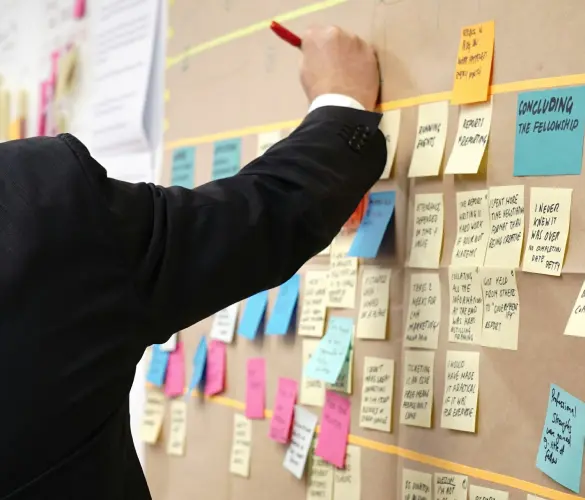
Business / 12 min read
Business / 12 min read
How to Take on More WordPress Development Projects While Maintaining Quality
As a digital agency that provides WordPress services, your job is to take on as many projects as possible while maintaining the highest quality. This is easier said than done…
Read More
Business / 9 min read
Business / 9 min read
How to Choose a WordPress Development Agency to Scale Your Projects?
When your agency starts to scale, you may decide that a big part of your expansion will be providing WordPress services. If that's the case but you don't have an…
Read More
Business / 7 min read
Business / 7 min read
How to Optimize Time and Resources in WordPress Projects
WordPress agencies need to optimize and human resources use in order for their services (development, QA, design, etc.) to be profitable. They need to plan these projects very thoroughly to…
Read More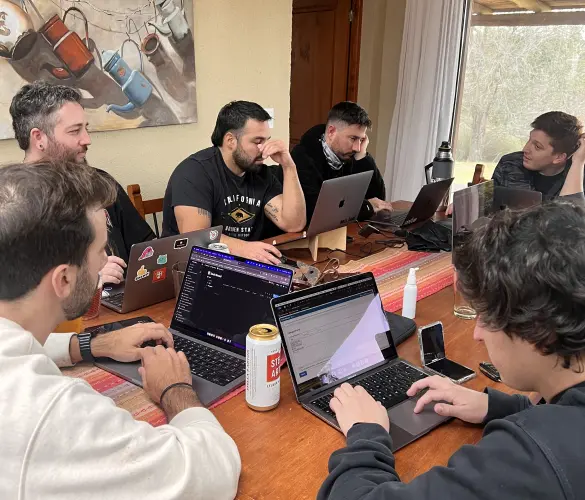
Business / 11 min read
Business / 11 min read
How WordPress Outsourcing Can Help Scale Your Agency
WordPress development outsourcing is becoming more frequent and affordable every day, helping global digital agencies of all sizes scale their services without the long-term investment of hiring an in-house team.…
Read More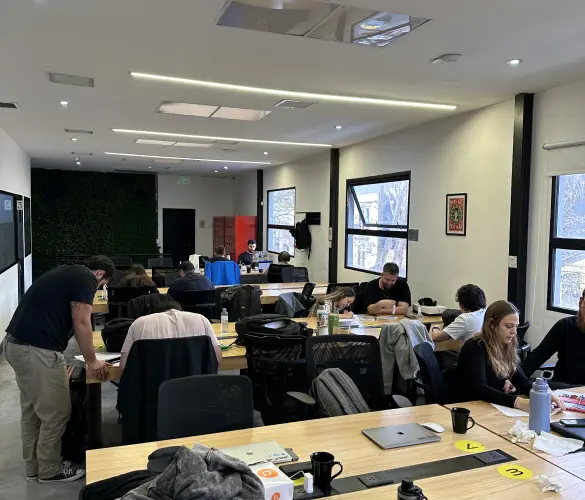
Business / 8 min read
Business / 8 min read
What Is a White Label WordPress Development Agency?
A white label WordPress development agency is a company of WordPress developers, QA analysts, and project managers who provide outsourced services to digital agencies that lack a development team. Importantly,…
Read More